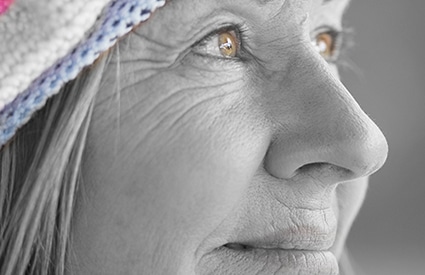Winter Skin
Your Skin in Winter
Just as you change your clothes with changing temperatures you should do the same with your skin care. Manage the change in temperatures from Summer Holiday jet setting to back-to-reality house-sitting and keep the forecast for your face healthy with Dr Lowe’s advice on curating a working skin care wardrobe.
UVA rays are present all year round, yes they penetrate winter weather, so don’t throw away your sunscreen just yet! However you can downsize your SPF30 to an SPF15 + UVA Protection for British weather, just remember to reapply regularly.
Many women simply rely on the SPF in their foundation or tinted moisturiser during the colder months. However the SPF factor on such products only refers to protection against UVB rays (the ones that burn) not UVA (the ones that age the skin). Read your products carefully.
Just as you wouldn’t brace cold winds, snow and frost in a bikini, you need to switch up your light weight summer moisturiser to a more heavy-duty face cream. However, don’t forget your skin type, more oily or combination skins may still need oil control even in winter.
Keeping your body moisturised will help retain your post-holiday glow and prevent skin from becoming overly dry. If you suffer from dry skin it can get worse in the winter months. Hot baths and showers can dissolve the protective barrier in the skin which will eventually lead to dryness. Have warm baths and showers to reduce this damage.
The sun may not be as hot in the forthcoming months but it may still be bright. Excessive squinting can lead to wrinkles forming around the eyes; make sure the lenses in your regular glasses as well as sunglasses have appropriate UV protection to prevent damaging your eyes.
To make up for the fact you will no longer be basking in sunlight take a daily supplement of Vitamin D3 of between 1000 and 2000 units.
Finally, the question most often asked when talking about the skin transitioning from summer to winter- how to stop that golden glow turning dull?
‘It takes approximately 28 days for whole skin cells to turn over, so your tan will last approximately two weeks. Exfoliation increases this cell turnover so to retain the skin cells that carry your tan refrain from exfoliating during this period. Instead make moisturising a key part of your routine at least twice a day.’
So there is no need to compromise your complexion or leave your tan on the plane!
Winter Breakout
Why does acne get worse at different times of the year especially around mid-winter?
One reason is poor diet over the holiday period. Many of us binge on poor quality carbs, cakes, mince pies, sweets and alcohol. All of these have a very high glycaemic index due to the sugar. Poor quality high glycaemic foods make the acne worse by increasing sebaceous or acne gland activity. Increased production levels of the hormone insulin are a result of these high carb diets. The insulin action is to reduce the increased glucose from the high carbohydrate intake, (when this hormone is defective, this can result in diabetes). Unfortunately, this hormone can also cause chemicals in the skin to have an inflammatory effect.
Acne can get worse in winter due to the stress caused in the run up to Christmas and depression from SAD, seasonal affective disorder. When you are stressed your body releases hormones to help cope with this. These hormones also cause acne.
If you notice your acne starting to flare act immediately. Make sure you are using an effective anti-acne treatment such as the acclenz™ Blemish Solutions range. Keep the spot gel in your bag to apply at the first sight of a breakout and through the day. Improve your diet and try to avoid sugary food and drinks. For SAD, consider visible light treatment.
Dark Spots Worsen Over Winter
Dark spots and sun spots can be a skin ageing giveaway. They show up on sun exposed skin such as the hands, the face, the neck and upper chest. They are caused by repeat sun exposure, but often take 10 or 20 years to actually develop after that first sun exposure and damage.
In summer, sun exposure (even in those using sunscreen) increases the background colour and tanning of the skin and, as a result, the brown spots are camouflaged by the darker skin colour. You may be fooled into thinking the spots have gone away, but they are just hidden by the tan. The bad news is when the tan fades in the autumn and winter the brown spots become noticeable again. The good news is that we have some excellent treatments that can treat and clear these spots, either permanently or certainly for long periods of time.
Alexandrite Laser
A laser that specifically targets the dark brown colour. This is excellent for stubborn deep brown spots.
Intense Pulsed light (IPL)
If you have a number of brown spots, superficial wrinkles and facial thread veins the IPL can rejuvenate skin, clearing brown spots and preventing new ones. The IPL can treat the whole face, neck and upper chest.
More >
Fraxel “Restore” Laser
This gentle laser reduces brown spots, larger brown patches, smooths deeper wrinkles and tightens loose skin on the face, neck and upper chest. This is chosen if you have more wrinkles as well as brown spots.
More >
These are just some of the treatments we offer here at Cranley Clinic. If you have any queries, or would like to book an appointment, please call us on +44 (0) 207 499 3223.

